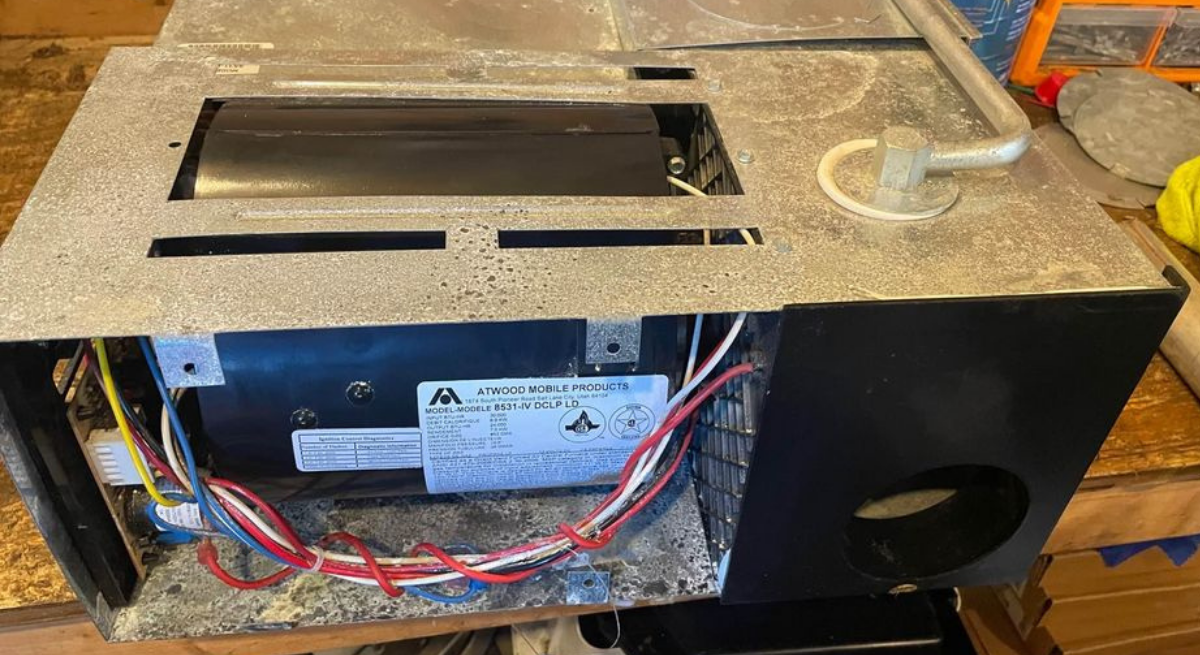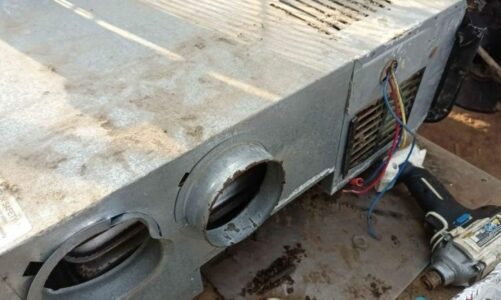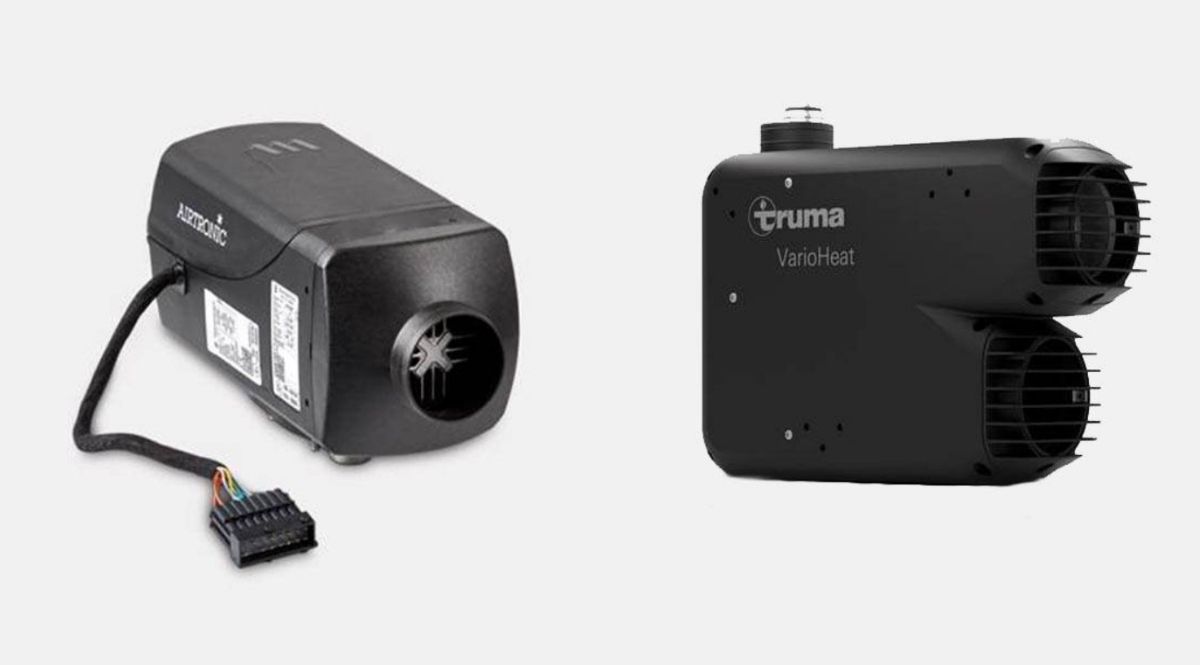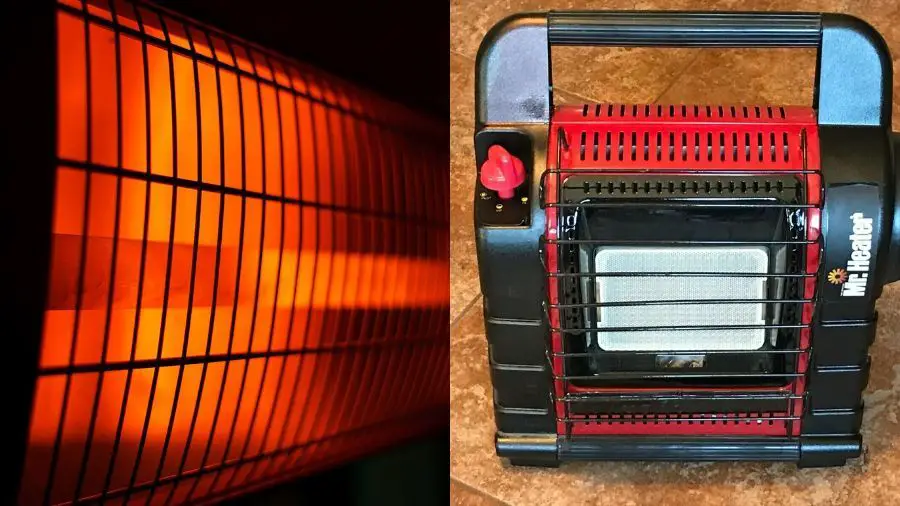RV furnaces are already designed to run at the most efficient that they would be from the manufacturer, running on propane and 12v DC power. With regular cleaning and maintenance, an RV furnace will continue to run as it did the 1st day it produced heat.
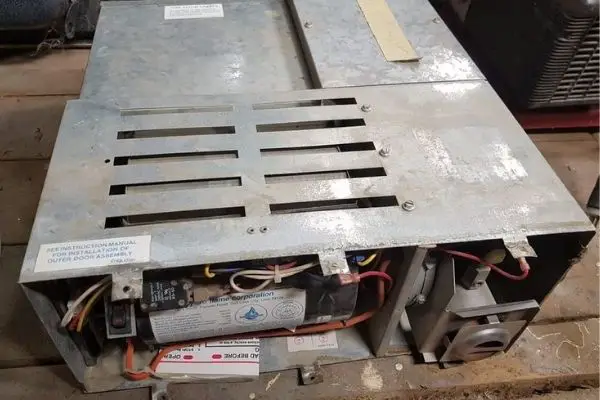
However, there are other ways to save money or reduce dependency on propane when using your RV in colder weather. Depending on how you’re using your RV, electric or propane space heaters, heat pumps, diesel-electric Webasto heaters, electric mattress pads or blankets, smart controllers, heavy blankets or sleeping bags, insulated window panels, and RV skirting can be added to your RV for increased efficiency with minimal changes.
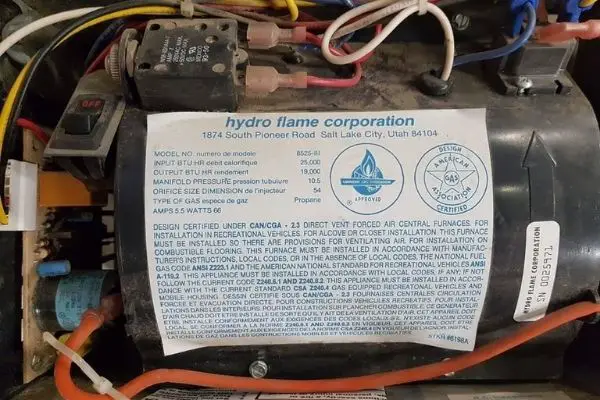
Other Articles of Interest:
Some people have even added miniature wood stoves to their RVs and really enjoy them. It is also important to make sure your tanks, pipes, hoses, and fixtures are protected from freezing. Sometimes the best way to save money on heating and cooling is simply to use the wheels to drive to a more comfortable climate.
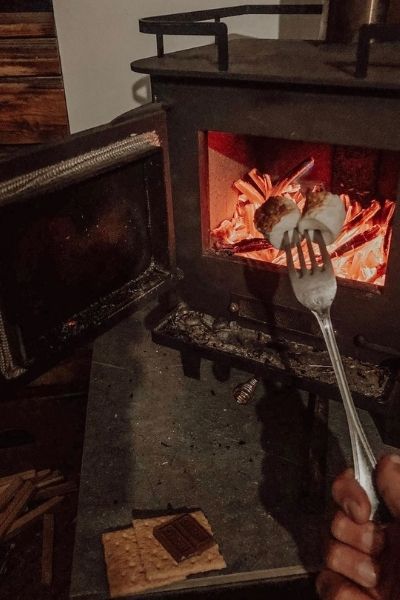
Can You Convert Your RV Furnace To Run On 110 Electric?
While 12v DC motors can theoretically be replaced with relays to switch 110v AC motors on and off, the control circuit boards would still require 12v DC power to function, and fitting motors not designed to fit an application usually require specialty machine work, so doing so for the sake of efficiency in an RV furnace is simply not practical.
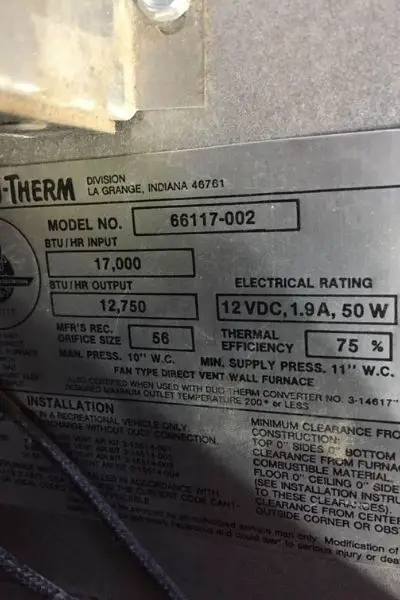
What would be much more practical is upgrading your 12v electrical system. This could be a more efficient power converter with a full bridge rectifier, a bigger alternator, solar panels, or more battery storage capacity. It all depends on your rig.
Will My RV Furnace Run Solely On Battery Power?
Your RV furnace requires 12v DC power and propane to run. Either your house batteries or your power converter can provide the electricity needed to run your furnace. Of course, batteries are not a power source but a storage device, so if you’re running your furnace from your batteries, you’ll have to recharge them somehow. A properly sized solar system should be able to provide power to run the furnace for as long as your propane supply lasts.
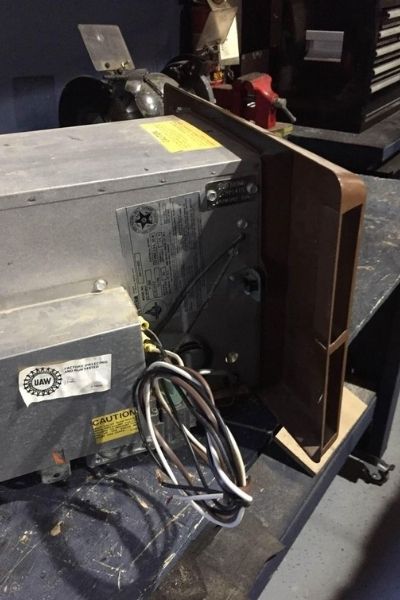
Can You Replace Your RV Furnace With A Heat Pump?
RV heat pumps are roof-mounted air conditioning units that can work in reverse. They do not fit in the spaces designed for propane furnaces. Heat pumps can be a nice upgrade and can provide a very energy-efficient heating option, however, the colder the outside air is, the less efficient they become. Each model of heat pump will also have a minimum operating temperature, which is the point where it becomes too cold outside to even provide heat.
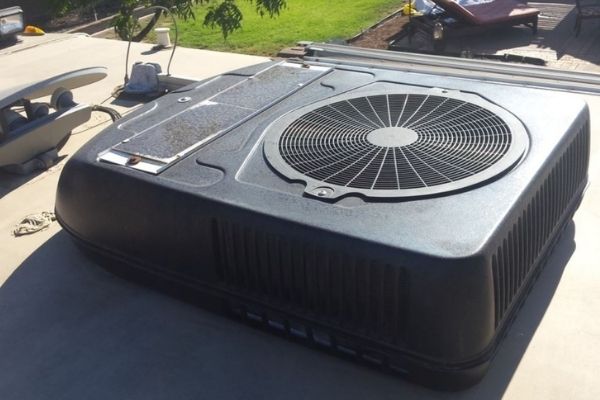
At this point, you’ll need your furnace or another heat source to pick up where your heat pump’s capabilities come up short. In most cases, it isn’t worth upgrading your air conditioner to a heat pump unless you already have to replace your air conditioner, but if power availability is of higher concern than the cost of an upgrade, it might still make more sense than filling the gap with electrical resistance space heaters.
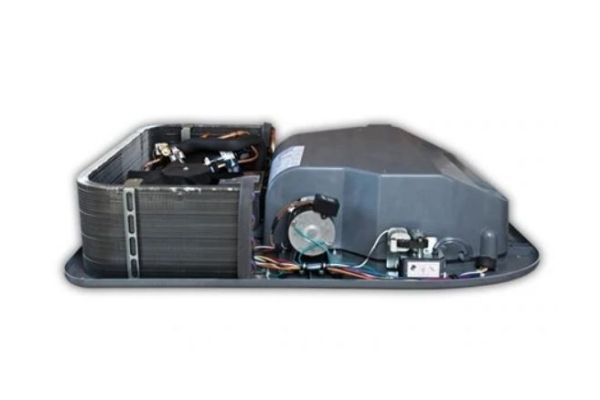
There are residential mini-split heat pump units that can run on 110v AC power that people have added onto their RVs for both heating and cooling. It is an unconventional way of doing it, but it can be a very energy-efficient solution.
Instead of a one-piece drop-in unit like a standard RV air conditioner, mini-split heat pumps have an outside compressor unit, at least one inside the air handler which heats or cools the air, and sets of refrigerant lines that need to connect the two and must be vacuum purged before being filled, which usually requires an HVAC technician to do the work.
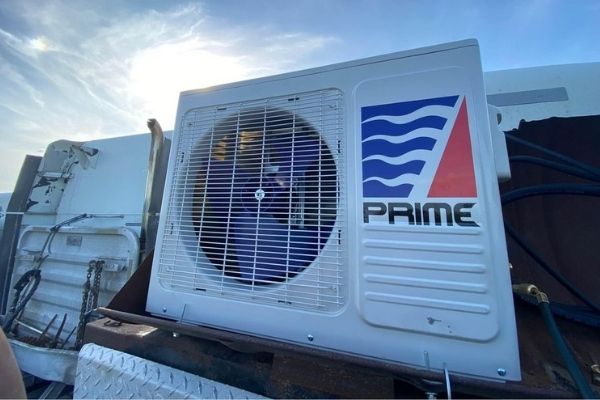
These units still have the same inherent limitations for heating as RV specific heat pumps in that they have minimum operating temperatures and reduced efficiency in colder temperatures, but because the market for residential units is so much bigger and their designs have been more influenced by government programs like LEEDs credits for buildings, mini splits tend to be better than RV units when it comes to those design specifics.
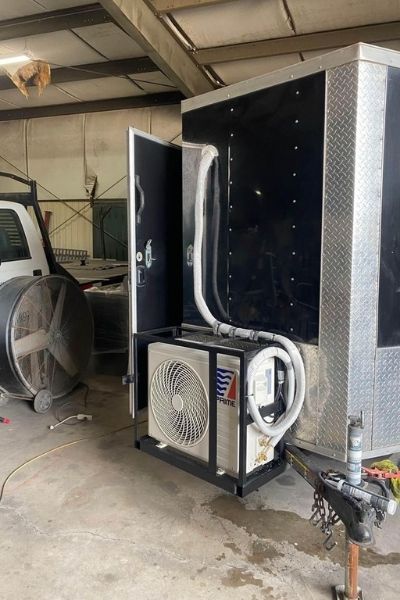
Can You Replace Your RV Furnace With A Home Furnace?
Residential forced-air furnaces are too large to fit the mechanical spaces in RVs, require high volumes of fuel which would cause RV sized propane tanks to freeze up in cold weather, are designed to heat much larger spaces, and require large amounts of AC power to run which would be very impractical to run with house batteries and inverters.
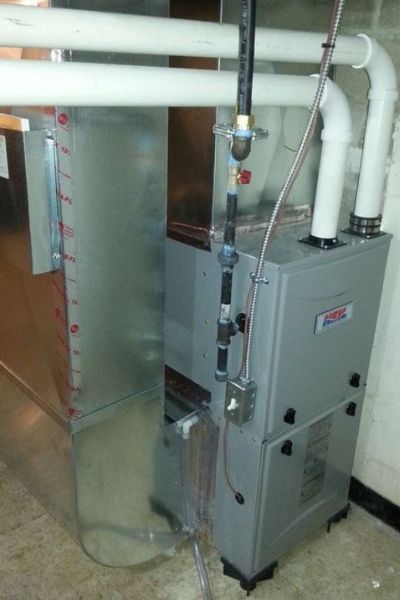
What Are The Alternatives To Using Your RV Furnace?
Buddy Heaters
Catalytic Propane heaters like the Buddy Heater, Little Buddy Heater, or the Big Buddy Heater have pretty decent heat output and can run off of 1lb propane bottles and require no electrical power. Other than the Little Buddy Heater, any of those can be run with a 20lb propane tank using a hose with a regulator and a filter.
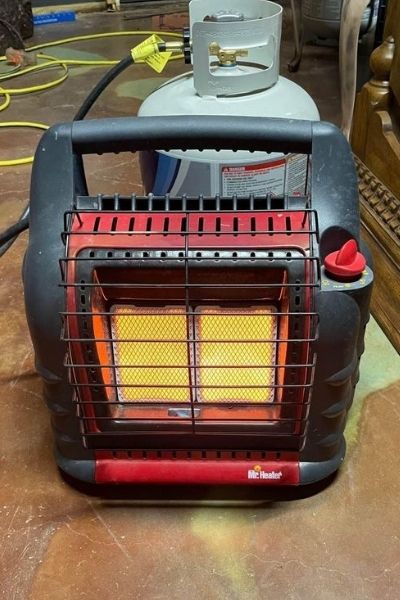
They have oxygen sensors that shut off the heat if oxygen is depleted, preventing them from making carbon monoxide, which is important because they are not vented to the outside air. It may be a good idea to use a carbon monoxide detector and crack a window when using them anyways, and you should read the manual to ensure that you don’t put them too close to anything which could catch fire, like any space heater, but otherwise, they can be very safe.
They even have tip-over sensors. Unfortunately, because they don’t vent outside, they put water into the air inside your RV, which can cause condensation and other moisture problems. I also wrote an article on the dangers of using buddy heaters in a camper, which you can read about.
Electric Space Heaters
Electric space heaters on the other hand add no moisture to the air, require no propane to run, but take much more power to operate than an RV furnace, so running off batteries is not an option. However, if you’re in a campground with a non-metered power connection, you can basically heat your RV for free.
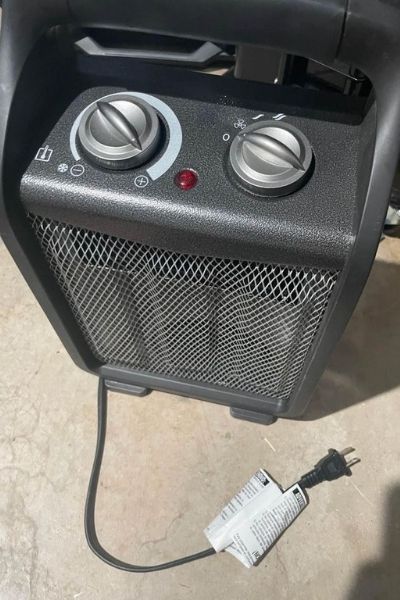
I talked about using space heaters in an article about winter camping. If you’re not too worried about freezing temperatures, you can use smart outlets or outlet timers to shut off the space heaters when you go to bed use extra blankets or electric mattress pads to keep warm while you sleep, and then have the heaters turn back on before you get up instead of running up your electric bills to heat unoccupied spaces while you sleep.
If you’re boondocking with a generator, you may still be able to use them, but it may not be as cost-effective as running your furnace despite the convenience of being able to top off a gas tank over changing propane cylinders. A lot of energy is lost turning liquid fuel into electricity before being turned into heat.
Diesel Electric Heaters
Diesel-electric heaters can be a good option too. Webasto heaters have been commonly used in sleeper cab semi-trucks and equipment like tractors and excavators for many years. Now that Webasto’s patent has expired, there are tons of imported knock-offs on the market for as little as 1/10th the cost.
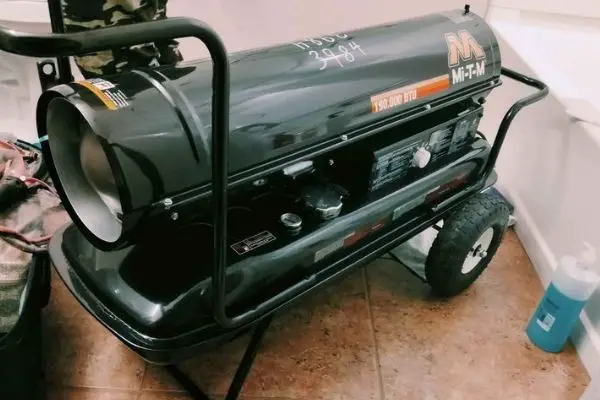
The knock-off heaters may not have the same level of reliability as the name brand Webasto heaters and have a reputation of failing at the most inconvenient times, so it may be prudent to install them alongside your existing furnace rather than as a replacement. If your RV already runs on diesel fuel, these heaters can be connected directly to your existing fuel system, but if not, there are kits available with small fuel tanks that can hold fuel for days and be topped off at the pump or with containers.
Unlike electric space heaters, diesel-electric heaters have a fairly complicated installation. They have intake and exhaust lines to be run, along with fuel lines, tanks and pumps, 12v power, control circuits, and ductwork. If you’re up for a project but really want a nice auxiliary heating system, a Webasto might be a good way to go.
Can An RV Furnace Add Condensation To Your Windows?
Your RV furnace is designed to vent its exhaust gasses to the outside, including water, carbon dioxide, and potentially carbon monoxide. This doesn’t stop moisture buildup and condensation from cooking, showering, breathing, sweating, and drying wet clothes. Moisture absorbers like damp rid and dehumidifiers can help keep things dry.
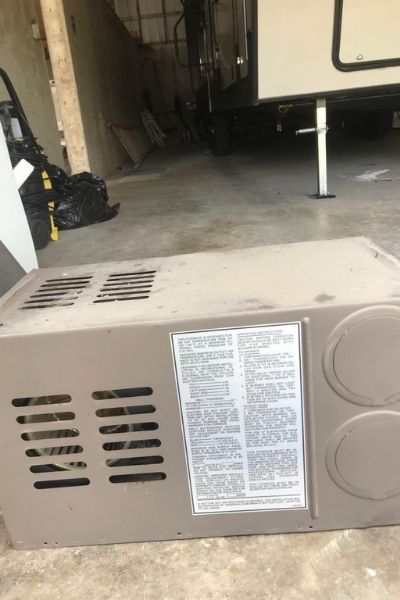
Double pane windows can help with condensation too, but they can be an expensive upgrade or retrofit. If it seems like you are having extra condensation from running your furnace, then you should have it inspected to make sure that no exhaust gasses are getting into your RV because carbon monoxide could be coming in along with it, which could be potentially fatal.
Do They Make Bigger Propane Tanks?
There are larger portable propane tanks available, up to 100lb capacity, which is totally compatible with the standard grill-type connections for 20lb tanks. Some campgrounds even rent and refill them for you for a fee so that you don’t have to worry about hauling them around the country when you don’t need them. Outside of campgrounds, there are propane suppliers who can deliver even larger, residential tanks big enough to fuel houses for months and refill them with trucks as needed.
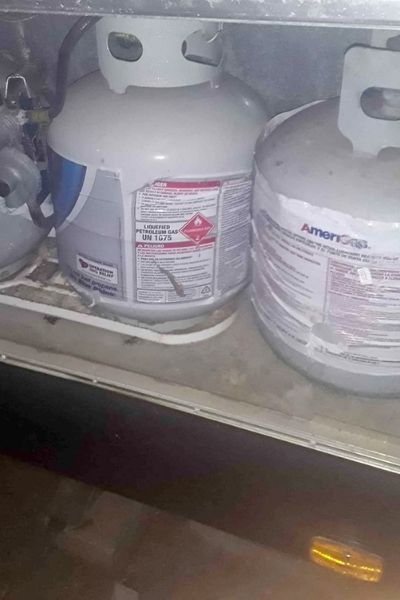
How Can I Keep More Heat Inside My RV?
Unlike a house, RVs have thin walls and outside air under the floor. Instead of having sewer and water lines buried underground where they are better protected from freezing, the underside of your RV has tanks and hoses which are more vulnerable to the cold. One of the best things you can do if you can’t winterize your RV is to install skirting around the bottom.

There are several ways to do this: Foam, curtains, straw bales, or inflatable skirting to name a few. It is a good idea to use electrical heat wrap and insulation on anything that could freeze, in addition to skirting, but it’s also important to control them with a thermostat so the heat wraps don’t heat the water to unsafe temperatures.
Like conventional structures, RV windows lose more heat than through insulated walls. In regular houses, thick insulated walls can make up for heat losses through windows, while RVs really need a little extra help. Reflectix or foam panels can be cut to fit windows and can make a big difference in keeping heat inside.
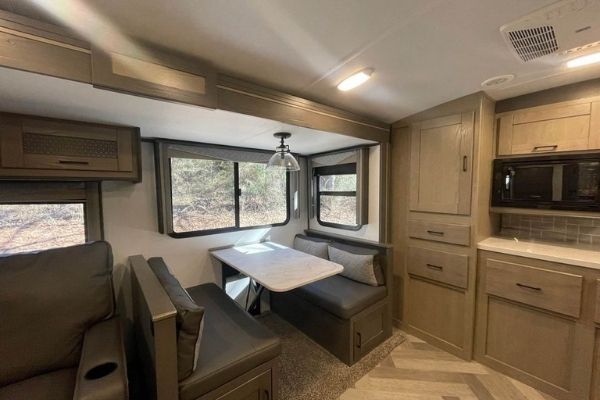
If you’re on your own property and living in your RV, you can even use temporary structures such as portable garage tents to provide a buffer space between the RV and the outside weather. Some people have even set up wood stoves to heat the space for their RVs in cold climates while building their permanent homes. Setting something like that up in a campground is usually frowned upon if not expressly prohibited, but as your RV can be used anywhere, it is still worth mentioning as a potential option.
Can I Use My RV While It Is Still Winterized?
You can use your RV without using your plumbing, which is called Dry Camping. Instead of keeping the water lines and tanks from freezing, you can flush them out with RV antifreeze or blow them out with compressed air. Then you can use bottled water for cooking and drinking while using baby wipes or hand sanitizer to keep your hands and body clean in between trips to the gym or the camp showers.
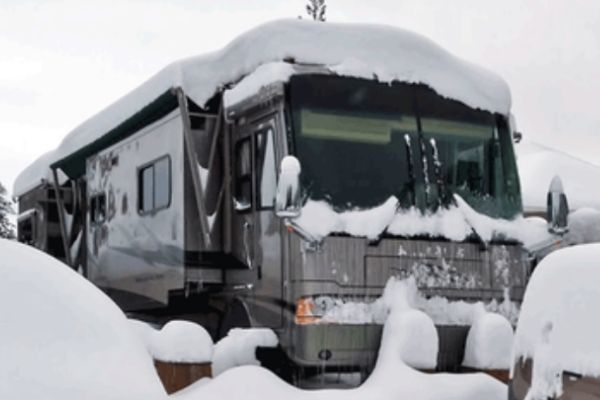
Instead of filling the black tank by using your regular RV toilet, you can use all sorts of portable camp toilets instead. Porta potties can be filled with RV antifreeze and then dumped into regular toilets. There are folding toilets designed to use with bags and gel packets which can be thrown in the garbage after use.
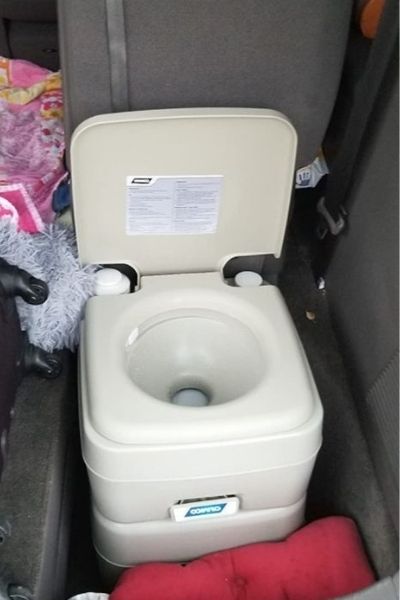
You can even use composting toilets which use sawdust instead of water or a bucket with a plastic bag and some kitty litter with a pool noodle on a 5-gallon bucket for a seat if you want to go really low budget. Then you only need to run the heat when you need it for comfort, rather than as an ongoing expense all winter long.

